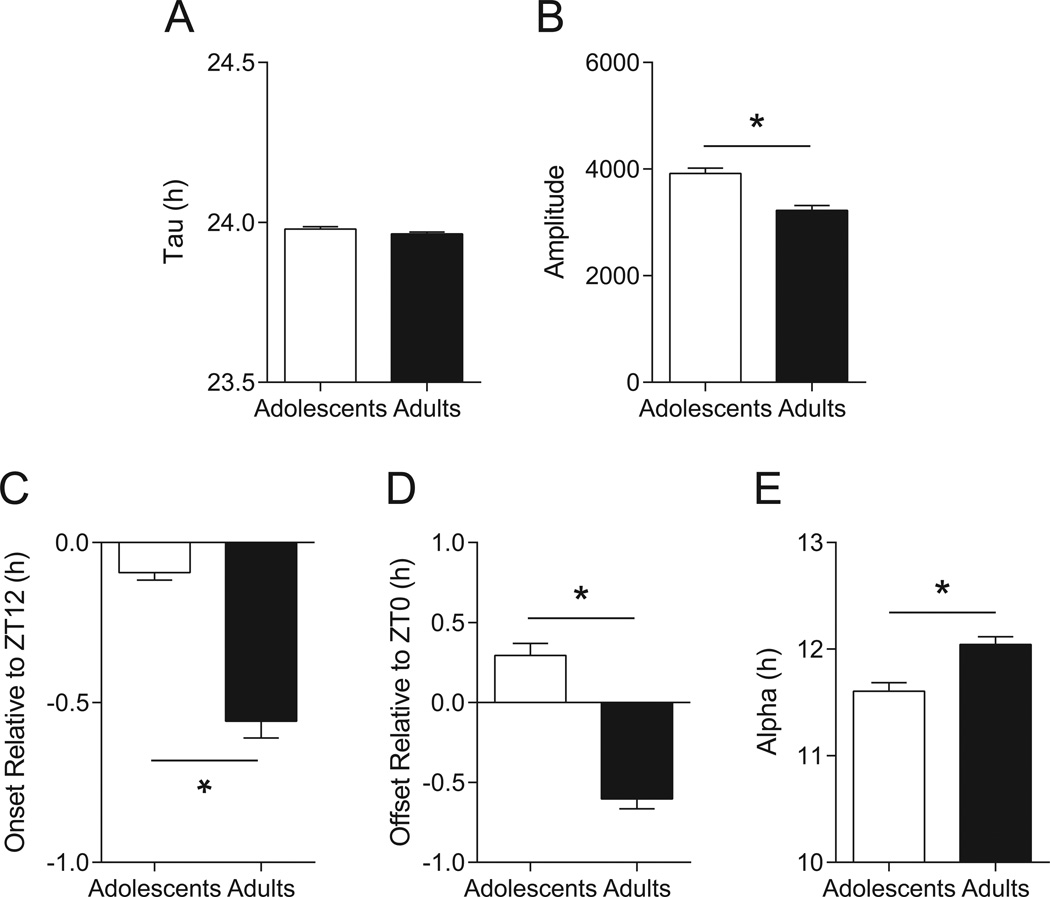Fig. 2.
Age-related differences in photocycle entrainment. (A) Period length did not differ between adolescents (n = 41) and adults (n = 43) in LD, indicating that both were able to entrain normally to a 24-hour photocycle. (B) Circadian rhythm amplitude was higher in adolescents compared to adults. (C) Adolescent mice became active before adults, much closer to the time of lights-off (ZT12). (D) Adolescent mice also became restful before adults, ceasing activity prior to the time of lights-on (ZT0), while adults became inactive after ZT0. (E) The duration of nightly activity (alpha) in adolescents was slightly but significantly shorter than in adults. Data are mean ± SEM; *p < 0.05.

